Kim Hermanson's Blog, page 42
March 15, 2012
Creativity: Basic Principles
I discovered these "principles of creativity" on a handout I made for a workshop I led ten years ago (yikes.) In any case, I believe they still hold up:
Creativity comes from the heart. Our hearts are what inspire our creativity. Listening to the heart's wisdom, we have the courage to do something different, try out new directions and explore new terrain. Creativity happens when our heart is moved and inspired.
Creativity needs space, both internal and external. One of the biggest blocks to creativity is having our psyches clogged with unfinished business. A simple walk or time spent in nature can give us space and a fresh perspective, or simply stopping to close our eyes and take a few deep breaths.
Your creative spirit needs a big vision. When we make things too small and focus on the mundane and trivial, we lose juice and life becomes boring. We can focus on problems, or we can focus on our big vision. We have a choice.
Creativity is nourished and fed by beauty. Nurturing environments and nurturing people.
Creativity is centered in you. The creative ground that you stand on is outside of the institution that you work for. Your own creative ground is comprised of your loves and passions, those things that you value and hold most dear.
Creativity is unique. Your response to any situation is unique. Your perspective is unique. And your creative expression is unique.
Creativity is bigger than you are. In the midst of a creative project, you don't know what the end result is going to look like. It's a lesson in letting go, to let your creativity take you in a different direction than you expected.
Creativity comes with "Beginner's Mind." Beginner's Mind means not acting out of habit. It means having an open mind and perceiving what is happening with fresh eyes. Be willing to not know.
Creativity means having a relationship with the world. Creativity requires participation--stepping out of our "bubbles," engaging with whatever it is that we are passionate about.
The movement of your life is toward learning and creative growth. Life presents us with continual opportunities to learn and create.
January 3, 2012
Navigating the Unknown - Examiner.com article
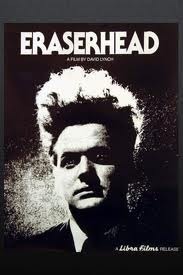
David Lynch, the legendary director of many noteworthy films including Elephant Man and Eraserhead, was once asked by Terry Gross on Fresh Air what he does when he makes a movie. After a long pause he replied, "You know, when I'm making a movie, I don't know what I'm doing." Of course there is something that is guiding his actions, but whatever it is, isn't something that he can verbalize. When Lynch is immersed in his creative process, he has a way of knowing that doesn't involve words.
Even if we are not professional artists, every time we enter a situation not knowing how it's going to turn out, we are engaged in the creative process. How do we navigate this unknown territory? ...To read the rest of the article, go to the Examiner: http://www.examiner.com/arts-education-in-san-francisco/navigating-the-unknown
Tweet









December 22, 2011
Learning is a Conversation - Excerpt from Getting Messy
In the 1920s, Lincoln Steffans was a history student at the University of California Berkeley. As a freshman, he became engrossed in history and read everything he could find on the subject. It soon became clear to him, however, that these scholars of history did not agree. He discovered that history was not a set of facts set in stone. Rather, history was an ongoing conversation, a conversation in which he himself, as an undergraduate, could participate. He wrote,
What I had was a quickening sense that...every chapter of [history], from the beginning of the world to the end, is crying out to be rewritten. There was something for Youth to do...Maybe these professors, whom I greatly respected, did not know it all. I read these books over again with a fresh eye, with a real interest, and I could see that, as in history, so in other branches of knowledge, everything was in the air. (quote found in Danielle Lafrance's Berkeley! A Literary Tribute.)
We can only really know something by forming our own relationship with it. You can read a book on a particular topic and pick up various pieces of information, but the material will not come alive for you unless you develop a personal relationship with it—a relationship that inspires your own questions and responses. This is when learning becomes expansive. We don't know what this relationship is going to hold for us and we don't know how it's going to shift and change over time. In the process of developing this connection, we uncover our values and beliefs, which in turn shape our perceptions and subsequent learning. We also discover this particular topic's questions and areas of debate, footholds where we are most likely to want to participate in the conversation.
In I and Thou, Martin Buber wrote, "All real living is meeting" and that is true when we learn. Learning happens when we form a relationship with the thing we are seeking to understand. In Buber's words, we cannot "have" the ocean, we cannot have any thing—but we can engage in relationships in this world. We can enter into a closeness with other people and with things, and this relationship with "other" is what is transformative. There is a sacredness in this relationship, in this "space between" us and our subject.
What is required when we teach in dynamic, continually-changing environments, environments where we are working entirely with the mystery of human nature?
My approach is to be a learner, and just as Lincoln Steffans discovered in the example above, learning is a conversation. Learning happens when we move out of our individual bubbles to participate and interact with something outside of ourselves. Then we step back "in" to reflect on our experience. Breathing occurs in the same manner: in-breath, out-breath, in-breath, out-breath. As we move forward, taking steps out and in, we begin to develop our own relationship with the topic. In this book, we are exploring what it means to be teachers and learners—in both cases, we ask questions, test them in action, and then go back in to reflect on what has occurred. In-breath, out-breath, in-breath.
The educator and philosopher John Dewey wrote that learning is a venture into the unknown that always involves risk. It requires courage, vulnerability, a degree of humility, and the willingness to be present to the unfolding. We may not know how to respond to some particular thing, but we are willing to learn.
Excerpted from Getting Messy: A Guide to Taking Risks and Opening the Imagination for Teachers, Trainers, Coaches and Mentors © Rawberry Books Publisher. For more information, go to the book page of this blog.
Happy holidays everyone!
Tweet









November 27, 2011
Paul Reynard Exhibit: December 5-9 New York, Art Directors Club
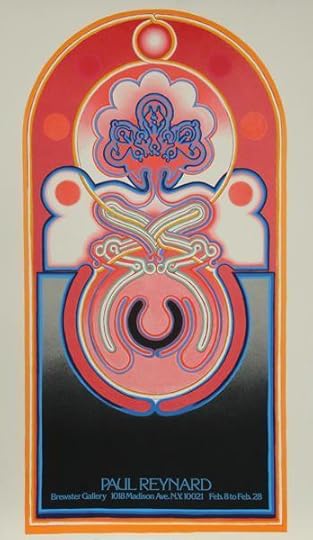
The artist Paul Reynard was asked before he died, "What is the place of art in contemporary life?" He responded, "The question could well be formulated as 'What is the place of love in contemporary life?'"
I've always loved that statement--it says so much. I'm also enthralled with his writings on the creative process. He said: "A work of art is necessarily incomplete. It is a way of learning." To my mind, we're all in this process of art-making, whether we think of ourselves as artists...or not.
This December, Art Directors Club Gallery in New York will hold a large exhibition of Reynard's work (he died in 2005.) In my opinion, the best artists show us how to see with love, and that's what Reynard's work is about. Here are the details:
December 5-9, 2011
Reception: Dec. 6th, 6-9PM
The Art Directors Club Gallery
106 West 29th Street, New York city
Hours: Mon-Fri, 10am-6pm
Tel: (212) 643-1440
Tweet









November 12, 2011
Beauty is Life. If It Seems to be Dead, It's not Beauty.
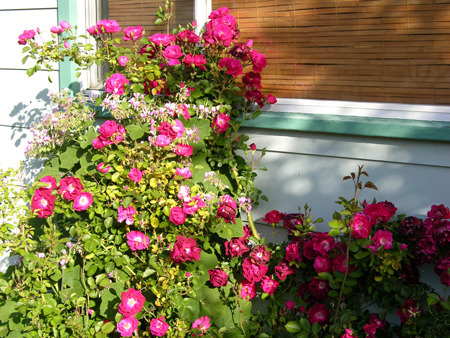
"Beauty is the experience that gives us a sense of joy and a sense of peace simultaneously. Other happenings give us joy and afterwards a peace, but in beauty these are the same experience. Beauty is serene and at the same time exhilarating; it increases one's sense of being alive...Beauty is the mystery which enchants us. Like all higher experiences of being human, beauty is dynamic; its sense of repose, paradoxically, is never dead, and it it seems to be dead, it is no longer beauty." (excerpted from My Quest for Beauty by Rollo May)
I have the sense that beauty is the direction of "True North." In other words, whatever it is that our culture is searching for in this time of chaos and change, the place we need to be looking, is toward beauty. It's easy to feel this when you spend time in nature--the cares of the world dissolve and peace settles over us. But beauty can be found in other arenas as well, such as meaningful connections with people and the arts. In my view, Beauty is the direction of True North.









November 5, 2011
"Imagination is when you dream and play at the same time"
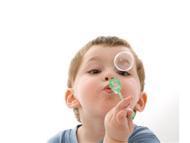
That's a statement from a five-year old. Michelle, a kindergarten teacher, posted it on my facebook page. I'm thinking we should carry notepads when we're with children, so they can teach us how to be human.









October 27, 2011
Thank you, James Hillman, for Letting the World In
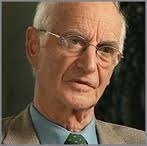
Creativity requires that we listen and notice: What is moving me? What is touching my heart? The process of discovering what we love is about letting the world in. We need to be open to it, see it, feel it, and experience it. The psychologist James Hillman passed away today. Here's something he wrote that has always inspired me:
The world "doesn't consist of merely objects and things; it is filled with useful, playful, and intriguing opportunities: The oriole doesn't see a branch, but an occasion for perching; the cat doesn't see a thing we call an empty box, it sees safe hiding for peering. The bear doesn't smell honeycomb, but the opportunity for delicious feeding. The world is buzzing and blooming with information, which is always available and never absent." (from The Soul's Code)
Hillman invites us to move out of our "psychological" homes—the house of our parents, and take a leap out into the home of the world. There we find our inspirations. We let the world in, and we discover what moves our hearts. Thank you, James Hillman.
~The above was excerpted from Getting Messy: Taking Risks and Opening the Imagination by Kim Hermanson
Tweet









October 26, 2011
Steve Jobs: "Art and beauty really do matter"
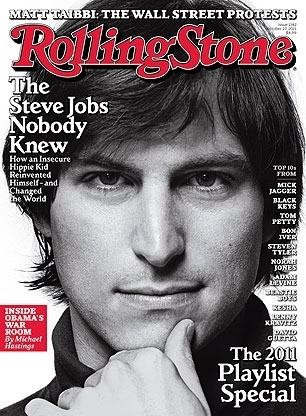
In the recent edition of Rolling Stone, editor Jann Wenner writes of Steve Jobs: "He knew in his soul that how a thing looked and felt was part of the inherent truth and importance and honesty of the thing itself... [he believed] that art and beauty really do matter, and that people will respond to them if they are offered."
In the article, Jobs says that he believed that the "consumer would respect a strong aesthetic point of view, even if it wasn't what they were asking for." The only college course that Jobs mentions as important is a calligraphy class, which taught him about aesthetics and beauty.
Perhaps a love of art and beauty is fundamental for any kind of revolution... Perhaps it's the foundation for change.









October 9, 2011
Spending a lifetime developing one idea...and making it breathe
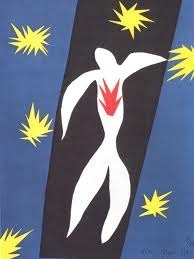
Matisse, "The Fall of Icarus"
The artist has but one idea
he is born with it and spends a lifetime developing it
and making it breathe.
--Henri Matisse
Perhaps all of us spend a lifetime working a single idea, whether we're conscious of it or not. Perhaps the dreams and images that continually speak to us are part of that hazy idea that tugs at us when we have a pause. And perhaps working this idea, even if we are uncertain about it, is our gift to the world. Stanley Kunitz said that poets do this--poets work the same key image over and over again in their writings, and at some level, we are all artists and poets. We are all working the images that speak to us.









October 4, 2011
The source of the imagination (what makes us uniquely human) is an unconscious metaphoric process
...and another reason to attend my upcoming workshop on metaphor at Book Passage.
http://bookpassage.com/event/class-ki...












